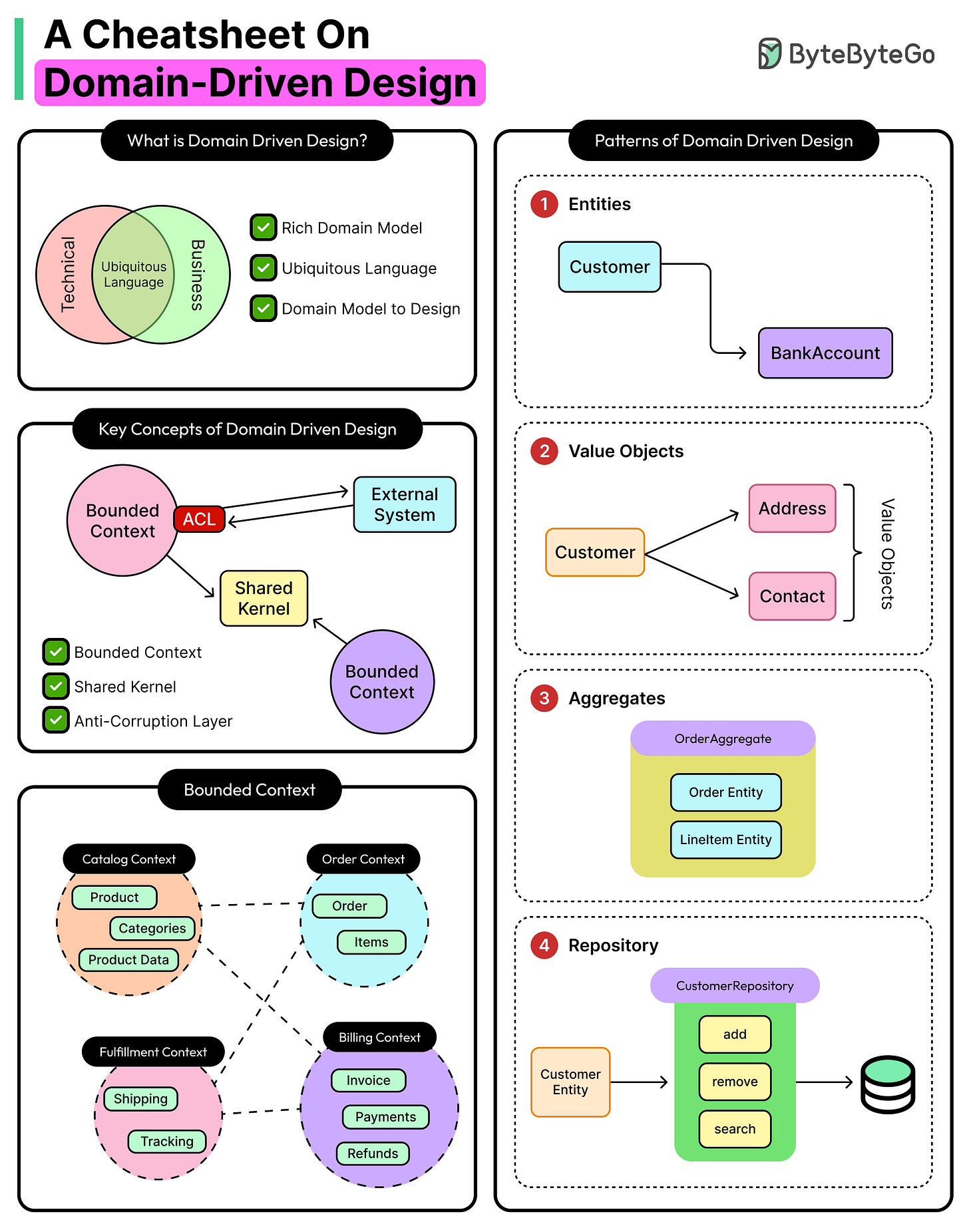Most software doesn’t break because of syntax errors or flawed if-else logic.
It breaks because teams lose alignment with the business problem they’re supposed to solve. Systems become tangled with technical assumptions that age poorly. Features get implemented without proper design considerations. And over time, every new requirement creates more issues that keep piling up.
Often, this isn’t a tooling problem. It’s a modeling problem.
Domain-Driven Design (DDD) tries to tackle this problem head-on. At its core, DDD is a way of designing software that keeps the business domain, not the database schema or the latest framework, at the center of decision-making. It insists that engineers collaborate deeply with domain experts during the project lifecycle, not just to gather requirements once and vanish into Jira tickets. It gives teams the vocabulary, patterns, and boundaries to model complex systems without getting buried in accidental complexity.
Of course, DDD is not a silver bullet. It doesn’t generate code, and it won’t magically fix a legacy monolith. But it does offer something more valuable in the long run: clarity around what the system is supposed to do and where it’s allowed to change.
This approach becomes especially valuable when:
The domain is non-trivial and keeps evolving. Think finance, healthcare, logistics, or giant marketplaces.
Multiple teams are working on overlapping parts of the system.
Code needs to reflect real-world behavior, not abstract technical constructs.
DDD doesn’t care whether the architecture is monolithic or microservice-based. What it does care about is whether the model reflects the real-world rules and language of the domain, and whether that model can evolve safely as the domain changes.
In this article, we explore the core ideas of DDD (such as Bounded Contexts, Aggregates, and Ubiquitous Language) and walk through how they work together in practice. We will also look at how DDD fits into real-world systems, where it shines, and where it can fall flat.


